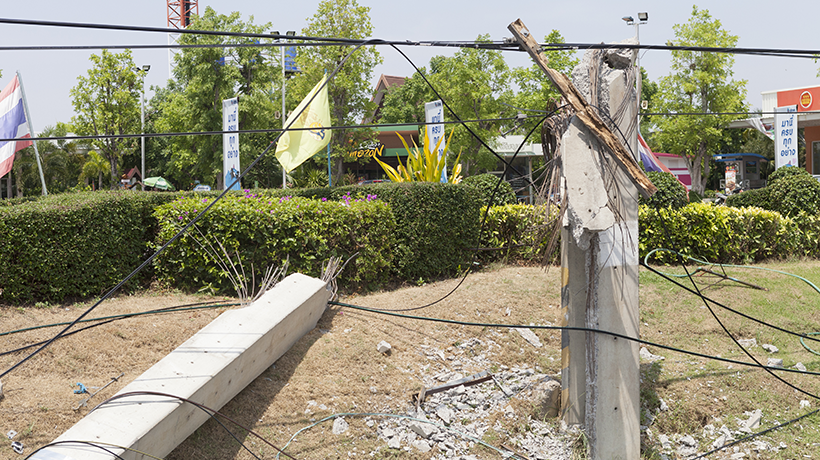Earlier this spring weather experts at NOAA’s Climate Prediction Center indicated that warmer ocean temperatures in the Pacific near the equator may create potential for an El Niño to develop late this summer or in early fall. They noted that there is a correlation between El Niño and increased wind shear in the tropical Atlantic, which typically limits the development and strength of tropical storms. The projections for the 2017 Atlantic hurricane season for named storms are slightly lower than average, according to Colorado State University
Don’t tell any of this to the Midwest.
- In March, Detroit Edison reported that they suffered the largest storm in their history, with nearly a million customers losing power; almost 50 percent of the total population in the area.
- In April, a string of deadly storms swept across the Central United States resulting in extensive damage and loss of life.
- In May, two dozen tornadoes swept across Wisconsin and Oklahoma, leaving devastation in their path.
- In June, straight line winds in excess of 80 mph knocked out power to hundreds of thousands of people across the Dakotas, Minnesota, and Wisconsin.
Power companies in the Midwest are no strangers to storm damage and power outages, but in recent years they have had a little reprieve from the harshness of Mother Nature. And as is human nature, when the length of time since something significant has happened increased, it is a case of out of sight, out of mind. So the 2017 spring storm season has been a rude awakening for distribution utilities from Oklahoma to Michigan.
Storm preparedness is like car insurance; you are happy that you have it when you need it most. But investing in processes, procedures, and IT systems to manage large storms seems difficult to justify, because it is not an everyday occurrence. Yet, at utilities of all sizes, there is someone who lives and breathes storm preparedness in their every day job; someone who updates and maintains the documented procedures for large storm management.
Previous to my current role with Hexagon Safety & Infrastructure, I served as the Senior Outage Management Engineer for Wisconsin Public Service Resources, a utility with about 500,000 customers across Northeastern Wisconsin and Upper Michigan. I was responsible for setting strategic corporate policy for storm response, as well as overseeing the IT tools for storm management, including outage management. I was fortunate that I had excellent corporate support for storm management, which included monthly stake holder meetings and annual refresher training for employees who were only storm focused when the storms rolled in. Our steering committee was composed of eight people representing functional areas including damage assessors, back office coordination, field coordinators, corporate communication, and dispatch. This was in line with some coastal utilities who have facilities dedicated to storm response, conduct annual table top exercises, coordinate with local, regional, and national jurisdictions and are active in mutual assistance organizations. As a company, we took the time to be prepared for not just the major storms, but leveraged many of those same processes to help us manage the everyday events. So when we experienced the hundred year type storms that seemed to happen every few years, we were ready.
While some utilities with geography that makes them susceptible to storm damage have similar procedures in place, others are not as fortunate. In my travels in talking with utilities across North America, it is clear that everyone believes that storm preparation and conducting damage assessment is vital to fast response and good customer service, not all have the funding or corporate support to have the tools in place when the wind blows or the ice pulls down power lines. I totally understand that it is difficult to justify expenditures on tools just as damage assessment when there is no guarantee that a major storm will occur in any given year; but far too many utilities struggle using paper maps with little automation and attempt to perform collection of damaged assets during the early stages of the storm.
Like insurance,you need to have it before the accident occurs! With the way that most utility specific damage assessment systems are priced, they typically pay for themselves after three to four medium-sized storms. I am also seeing that the utilities that are using damage assessment, don’t wait for the major storms; they are using tablets for comprehension assessment on an everyday basis to document damage. The key to these systems is the integration; stand alone damage assessment can automate some of the collection, but unless it covers the entire end-to-end workflow, it has limited value. The Intergraph Damage Assessment solution produces material lists and integrates the collected information back to any outage management system. That means that the storm managers and dispatchers know which assets are damaged and can assign the follow up work to the correct people and ensure that they have the tools needed to repair, then restore power. Integration and sharing of information to those who need to know is what justified the expenditure.
Mother Nature seems to be providing a gentle reminder in 2017 that she is still there and capable of wreaking havoc on the power grid. As emerging technologies for automation of damage assessment become mainstream and affordable, I hope that all utilities will begin to embrace that this is not a solution of convenience, but a requirement to be adequately prepared for storms!















